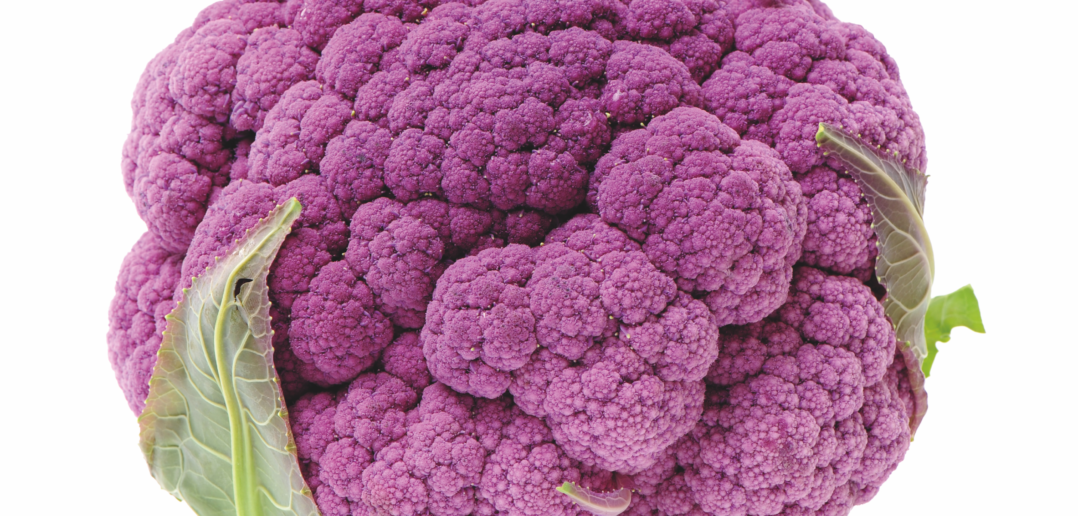Over recent years quinoa and kale have become the superfoods of choice, balanced meals are served in bowls, and a ride-sharing app has moonlighted as a restaurant delivery service.
Consumers are growing more socially and environmentally conscious, cultivating the relationship between food and well-being. Buzzwords such as ‘small batch’, ‘artisan’ and ‘craft’ products entered the mainstream, and poke – the saucy, Hawaiian sashimi (likely served in a bowl) – achieved culinary ubiquity.
Today’s top food trends will be influenced by technology, social awareness, sustainability and a desire for authenticity. Investors will bet big on food tech start-ups, virtual restaurants and superfood farming. Consumers and corporations will aim to cut food waste, and vegetables – in multiple forms – will have their moment in the spotlight.
Waste not
Sustainability will continue to be a key issue, focusing on the impact that food waste has on the planet. According to the Food and Agriculture Organisation of the United Nations, nearly a third (more than 1.4 billion tons) of food produced for human consumption is lost or wasted each year.
One grass-roots trend joining the fight against food waste is the ‘ugly fruit’ movement. Fruits and vegetables that fail to meet the cosmetic standards (up to 20% of farm production) of supermarkets are sold as imperfect, usually at a discount.
Instead of being left to rot, crooked carrots, pockmarked potatoes and weather-scarred apples are finding their way to the table. Ugly fruit is a hit with consumers, because of its wallet-friendly contribution to sustainability.
More restaurants and chefs are promoting root-to-stem dining, adopting a philosophy similar to the wildly successful nose-to-tail movement. This vegan-friendly trend advocates the use of whole produce, sourcing nutrients from often-discarded vegetable skins, leaves and stalks.
Vitamin-packed vegetable scraps like carrot tops, broccoli stalks and squash blossoms are suddenly in demand. This not only results in less food waste, it challenges the perception of what we consider edible.
Meatless mains
From plant butchers to purple produce, vegetables are top’s food trends, and not just for vegetarians or vegans. In their annual Hottest Food and Beverage Trends report, international restaurant consultants Baum & Whitman predict, “Vegetables will extend their domination of the dinner plate, shoving animal protein to the edges… or off the plate altogether.”
Once consigned to salads, side dishes and the vegetarian lifestyle, vegetables are becoming accepted – even revered – for their value, diversity and flavour. In supermarkets, vegetable ‘butchers’ assist customers in selecting and slicing produce for specific recipes.

Plant-centric restaurants are opening at a record rate, some calling themselves, ‘vegetable forward’ to eschew the confines of vegan and vegetarian labels. In urban centres like Los Angeles, New York and Chicago, these restaurants are booked out months in advance, attracting omnivores with complex vegetable dishes and elevated, global cuisine.
Hybrid and heirloom produce are adding vivid colours to the dining landscape. In their global buyer’s forecast, Whole Foods Market predicted “purple food” would be a leading trend, citing purple cauliflower and purple cereal among products certain to inspire the Instagram generation.
Jackfruit fever
Move over tofu, vegetarian pulled ‘pork’ sandwiches may soon appear on tray tables everywhere, thanks to the pre-eminent meat alternative, the jackfruit. Indigenous to India and Southeast Asia, jackfruit is cropping up on menus worldwide.

The scaly, bulbous tree fruits are the world’s largest, weighing up to 100 lb (45kg) each. Hailed as a miracle fruit with the potential to combat world hunger, jackfruits are rich in fibre, protein and vitamins. The fruit’s texture resembles pulled chicken or pork when cooked, and much like tofu, jackfruit absorbs all surrounding flavours.

Plant-based burgers
Plants can now imitate meat on a whole new level, and vegetable-based burgers are driving the trend. Silicon Valley start-ups Beyond Meat and Impossible Foods received international attention after introducing the Beyond Burger and the Impossible Burger – veggie patties that look and cook like the real thing.
These burgers sizzle on the grill, turning from pink to brown as they cook. They even ‘bleed’ like their meaty counterparts, thanks to beetroot juice. However, the true success of these burgers lies in their remarkably authentic attention to details, from the texture, to the aroma, to the flavour. Outside Magazine recently called Beyond Burger “a holy grail for the plant-based industry”.

As a testament to its quality, Beyond Burger is the first of its kind to be sold in the meat aisle, alongside pork and poultry, at Whole Foods Market. The Impossible Burger has cracked the Michelin-rated restaurant industry and is served in a handful of high-end eateries across the USA, with plans to expand internationally.
The new superfoods
Quinoa and kale were the original superfood trailblazers. They not only raised awareness about healthier food choices, but their popularity educated consumers on nutrient-rich foods with multiple health benefits. What’s more, according to experts the trend isn’t slowing down anytime soon – moringa and sorghum are the superfoods to watch.
Moringa is the most recent super green to transcend the wellness niche into widespread recognition. Moringa oleifera, or the drumstick tree, is native to Africa and northern India. Packed with antioxidants, it is lauded as an anti-inflammatory and energy booster with a myriad of health benefits.
The plant’s leaves are typically dried, ground to a powder and then used as a supplement in anything from teas and smoothies, to energy bars. Devotees of moringa claim the superfood possesses near-miraculous properties that lower cholesterol, manage blood sugar, improve vision and aid weight loss.

According to the McCormick Flavor Forecast, the next supergrain to take on the quinoa market will be sorghum. One of the ancient grains of Chinese mythology, sorghum is an excellent source of protein, iron and fibre.
Bearing a resemblance to Israeli couscous, sorghum can be popped or puffed as a snack food, or cooked into breakfast bowls and granola bars. The 4,000-year-old grain is both attractive and relevant to today’s consumers because of its non-GMO and gluten-free status.
Farmers are turning to sorghum because it is a drought-tolerant crop, meaning that it will produce substantial yields even in moderate to severe drought conditions.
Butchers become food celebrities
Although vegetables are trending, meat lovers need not worry. Another top artisan trend falls to the process that previously occurred between the farm and the table – butchery.
Butcher shops are doubling as trendy restaurants where diners can choose their own cuts of meat and enjoy them on the premises. Consumers are eager to be involved in the process and broaden their knowledge of non-traditional cuts.
From thin-sliced soppressata to herb-infused pâté, house-made meat products are a win for butchers, chefs and diners, according to the National Restaurant Association, which has named charcuterie a top food trend.
Charcuterie, with its limitless possibilities in aging, drying, curing and smoking meats, inspires chefs to creatively reduce food waste by smoking and curing less popular cuts of meat.
Virtual restaurants
Recent years have witnessed a surge in tech-driven food startups. Smartphone users order meals via apps, with popular food delivery platforms like Seamless and Grubhub becoming liaisons between restaurants and their customers, and Blue Apron and Hello Fresh aimed at home kitchens with ready-to-cook meal kits. However, the trend most likely to dominate the delivery market is the virtual restaurant.
Ghost restaurants. Cloud kitchens. These terms refer to ‘virtual’, or delivery-only businesses aiming to cater personalized, restaurant-quality meals to tech-savvy customers.
In 2016 virtual startups Munchery (USA), EatFirst (UK) and FoodChéri (France) were successful in marketing to a young, professional consumer base in search of bespoke, balanced meals on demand.
With lower operating costs and no dining room to furnish, delivery-only restaurants have the flexibility to tailor to clients’ needs, from diet restrictions to flavour preferences, and stay on par with popular trends.

Even celebrity chefs like David Chang (Momofuku) are jumping on board. In 2016 he launched Ando in New York City, a comfort-cuisine kitchen dishing out cheesesteaks and crispy fried chicken via a mobile app.
Can this trend translate to aircraft cabins? There could, someday, be an app for that. Air France currently allows customers to order premium meals prior to departure. An app-based ordering system could effectively cut down on food waste and open the door for premium products at higher price points.
There’s not yet a market for inflight catering on demand, but with the continued success of virtual kitchens and the desire for restaurant-quality meals, economy class passengers may one day have the option to enjoy a first-class meal.
News: iFLEAT launches
After more than a year of R&D when foodie and former Gategroup executive Jaap Roukens identified a gap in the market for delicious, easy-to-order restaurant-quality meals on board, he launched iFLEAT, which arranges for food to be delivered from restaurants directly to passengers in the aircraft. Passengers simply fill in their name and flight booking number in the iFLEAT App up to 12 hours before their flight in order to pre-order restaurant food.
In October 2016 Air Berlin became the first airline to launch the service, with five Berlin restaurants currently partnered with the service, each offering a different style of food.
iFLEAT is set to roll out in other cities serviced by Air Berlin and its partner, Sky Catering, including Abu Dhabi, New York, Miami and Chicago. The service is also being rolled out across other major global airlines.
News: Airlines respond
The gluten-free market is thriving, and according to a report from market research specialist Technavio is expected to grow at a compound annual growth rate of approximately 6% between 2015 and 2019. This growth is driven by a perception among consumers that gluten-free foods are healthier, and most airlines now cater for gluten-averse passengers, as well as for vegetarians, vegans and diabetics.
Asian airlines do this very well, according to Nikos Loukas, airline industry consultant and author of Inflight Feed. ”Most Asian-based carriers offer an assortment of allergen-free meals and usually offer something that will suit almost any request. ANA Group stands out among the best. Allergen-free meals can be ordered up until 96 hours before the flight time, while kosher and vegetarian meals can be ordered just 24 hours out from take-off,” Loukas states. “ANA offers a 27 allergen-free meal including the seven most common allergens, and 20 less common such as crab, banana, kiwi fruit and Matsutake mushrooms.”
News: Nutrition trends
Consumers are becoming less interested in dieting, instead choosing clean and mindful eating as their path to healthier living. This is the finding of the 2017 ‘What’s Trending in Nutrition’ national food trend survey, a poll of more than 1,700 registered dietitians across the USA on trends in food and eating.
The survey, compiled by Pollock Communications, an NYC-based food, health and wellness PR agency, and nutrition magazine Today’s Dietitian, predicts that consumers are becoming less concerned with a major food trend of previous years – foods that are GMO-free, sustainable or gluten-free.
The research found that GMO-free and sustainable foods have experienced on average a 20% decrease in terms of consumer concern. Dietitians attribute this decline to food label transparency and more food companies changing their range of ingredients. In contrast, consumers will be looking for more low-sodium and sugar-free options. They also identified some superfood trends that airline caterers should bear in mind, namely:
1. Seeds, like chia and hemp
2. Avocado
3. Nuts, like almonds and walnuts
4. Fermented foods like yoghurt
5. Ancient grains
6. Kale
7. Green tea
8. Coconut products
9. Exotic fruits
10. Salmon
The edible lexicon
According to industry experts, the following ingredients are about to enter the culinary lexicon. Stay ahead of the trend and familiarize yourself with these future food fads…
Cajeta: A thick, sweet Mexican syrup made from caramelized goat’s milk. Similar to its cow’s milk counterpart, dulce di leche, cajeta is said to possess a deeper and more complex flavour.
Teff : A small, nutrient-rich ancient grain native to Ethiopia, where it’s consumed daily in the form of injera bread. It contains more calcium and vitamin C than most other grains and is considered an athlete’s superfood.
Umeboshi: An extremely sour, pickled stone fruit often translated as ‘Japanese salt plum’, Harvested in the mountains of Japan, the ume (related to an apricot) is fermented in salt and dried. It is typically consumed with white rice and is said to aid digestion.
Zhug: A bold Yemeni hot sauce made with cilantro, parsley, fresh chillies and an abundance of garlic. It is considered the go-to condiment in Israeli cuisine and served with street food like falafel, kebabs and shawarma.
About the author
 Elyse Pasquale is a freelance food and travel journalist, web TV host and culinary adventurer. She explores the world with her taste buds, connecting to people and cultures through the language of local food.
Elyse Pasquale is a freelance food and travel journalist, web TV host and culinary adventurer. She explores the world with her taste buds, connecting to people and cultures through the language of local food.
With a philosophy that food is “living history”, Pasquale has travelled to 66 countries and more than 300 culinary destinations around the world. Over the past five years, she has explored the cutting edge of culinary tourism, looking for food adventures wherever she goes.





